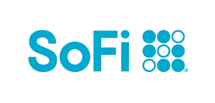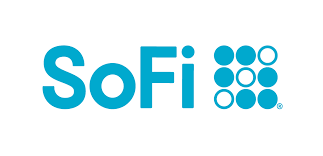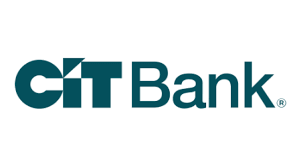If there's one account everyone should consider, it's a high-yield savings account (HYSA).
I keep about $25,000 in mine -- it's where my emergency fund and short-term savings live. The interest alone makes it worth it, especially compared to the pennies traditional savings accounts pay.
Used the right way, an HYSA offers the perfect mix of safety, flexibility, and real earning power. Of course, no single account fits every need -- so let's look at when an HYSA really shines, and when it makes sense to pair it with something else.
The pros of high-yield savings accounts
Here are all the reasons HYSAs stand out, and why I believe every saver should have at least one high-yield account open.
1. Way higher interest rates
This is the main selling point. A competitive online HYSA can earn you 10 to 15 times more interest than the national average savings account rate (and sometimes 200 to 400 times more than big traditional banks offer -- not kidding!).
I'll share my personal story as an example. Right now, my regular savings account earns just 0.01% interest. In other words, it's basically nothing.
By comparison, my high-yield savings account is currently paying 4.00% APY.
Here's what that looks like in real dollars, assuming I keep $25,000 in savings:
- Traditional savings account (0.01%)
$25,000 × 0.0001 = $2.50 per year in interest - High-yield savings account (4.00%)
$25,000 × 0.04 = $1,000 per year in interest
That's a 400X increase in interest for keeping money in an HYSA vs. my traditional bank savings account.
That's a difference of $997.50 annually, or about $83 per month, for doing nothing other than keeping my money in a better-earning account.
In other words, my emergency fund isn't just sitting there anymore -- it's quietly earning me an extra thousand dollars a year while staying completely liquid and FDIC-insured.
One standout option right now: SoFi Checking and Savings (Member FDIC), which currently offers up to 4.00% annual percentage yield (APY) -- one of the most competitive rates available from a trusted, FDIC-insured bank.
SoFi Checking and Savings
On SoFi's Secure Website.

On SoFi's Secure Website.
Earn up to 4.00% Annual Percentage Yield (APY) on SoFi Savings with a 0.70% APY Boost (added to the 3.30% APY as of 12/23/25) for up to 6 months. Open a new SoFi Checking and Savings account and pay the $10 SoFi Plus subscription every 30 days OR receive eligible direct deposits OR qualifying deposits of $5,000 every 31 days by 1/31/26. Rates variable, subject to change. Terms apply at sofi.com/banking#2. SoFi Bank, N.A. Member FDIC.
- Competitive APY on both Savings and Checking
- No monthly account fee
- Welcome bonus up to $300 (direct deposit required)
- ATM access
- Unlimited number of external transfers (up to daily transaction limits)
- FDIC insured (up to $3M with opt-in to SoFi Insured Deposit Program)
- Early access to direct deposits
- Tools to help you track savings goals
- Combo account only; no stand-alone savings or checking
- Maximum Savings APY requires direct deposit
- No branch access; online only
- Overdraft protection requires monthly direct deposit minimum
For those who plan to set up direct deposit with their new account, we think SoFi Checking and Savings (Member FDIC) is hard to beat. Not only does this savings account offer a strong APY, but the linked checking account earns an above-average rate, too -- which is a rare perk. Plus, new customers earn a bonus of up to $300 with eligible direct deposit. Frankly, it's the kind of combo that could make it worthwhile to switch banking relationships.
2. Guaranteed safety
All the top high-yield savings accounts are FDIC-insured (or NCUA-insured if you use a credit union), which means your deposits are protected up to $250,000 per depositor, per bank, per account ownership category.
If an FDIC- or NCUA-insured institution were to fail, balances up to that amount are guaranteed to be returned to you. For joint accounts with two owners, coverage doubles to $500,000.
That's why I never stress about the safety of my emergency fund -- no matter what happens in the banking world, my savings are safe and sound.
3. Low (or no) fees
I don't pay any monthly fees for my HYSA (and neither should you).
Many of the best HYSAs have no monthly maintenance fees and no minimum balance requirements. That's a refreshing change from old-school banks that try to nickel-and-dime you for just having an account open.
Oh yeah, transferring money in and out is typically free as well. When you're choosing an HYSA, make sure it offers easy and free transfers.
4. Easy mobile apps and online access
Most HYSAs are offered by online banks -- especially the ones with the highest APYs.
And online banks have the best tech. I'm talking about mobile apps that are super easy to use, and platforms that let you complete your banking tasks in seconds. No branch visits or tellers required.
You can do stuff like:
- Open an account in minutes from your phone
- Transfer funds to and from your checking account at another bank
- Manage everything from an app
This is one of my favorite things about fintech HYSAs. I transfer money between my Chase checking account and Betterment HYSA all the time, quickly with a few taps on my cellphone.
5. Encourages saving discipline
This is more a byproduct than a feature. But let me explain why having an HYSA helps you save more.
Separating your savings from your everyday checking account means the money isn't staring at you every time you log in to pay bills. That little bit of friction needed to access your savings (transfer funds before you can spend them) can be just enough to stop impulse purchases.
Out of sight, out of mind. You'll naturally touch your savings less by keeping that money in a totally separate account. And with the higher interest growing the balance, you'll be encouraged to add more over time.
Compare savings rates
Make sure you're getting the best account for you by comparing savings rates and promotions. Here are some of our favorite high-yield savings accounts to consider.
| Account | APY | Bonus | Next Steps |
|---|---|---|---|

Open Account for SoFi Checking and Savings
On SoFi's Secure Website.
4.90/5
Our ratings are based on a 5 star scale.
5 stars equals Best.
4 stars equals Excellent.
3 stars equals Good.
2 stars equals Fair.
1 star equals Poor.
We want your money to work harder for you. Which is why our ratings are biased toward offers that deliver versatility while cutting out-of-pocket costs.
|
up to 4.00%
Rate info
Earn up to 4.00% Annual Percentage Yield (APY) on SoFi Savings with a 0.70% APY Boost (added to the 3.30% APY as of 12/23/25) for up to 6 months. Open a new SoFi Checking and Savings account and pay the $10 SoFi Plus subscription every 30 days OR receive eligible direct deposits OR qualifying deposits of $5,000 every 31 days by 1/31/26. Rates variable, subject to change. Terms apply at sofi.com/banking#2. SoFi Bank, N.A. Member FDIC.
Min. to earn: $0
|
Earn $50 or $300 and +0.70% Boost on Savings APY with direct deposit. Terms apply.
Earn up to 4.00% Annual Percentage Yield (APY) on SoFi Savings with a 0.70% APY Boost (added to the 3.30% APY as of 12/23/25) for up to 6 months. Open a new SoFi Checking and Savings account and pay the $10 SoFi Plus subscription every 30 days OR receive eligible direct deposits OR qualifying deposits of $5,000 every 31 days by 1/31/26. Rates variable, subject to change. Terms apply at sofi.com/banking#2. SoFi Bank, N.A. Member FDIC. |
Open Account for SoFi Checking and Savings
On SoFi's Secure Website. |

Open Account for CIT Platinum Savings
On CIT's Secure Website.
4.60/5
Our ratings are based on a 5 star scale.
5 stars equals Best.
4 stars equals Excellent.
3 stars equals Good.
2 stars equals Fair.
1 star equals Poor.
We want your money to work harder for you. Which is why our ratings are biased toward offers that deliver versatility while cutting out-of-pocket costs.
|
3.75%
Rate info
3.75% APY for balances of $5,000 or more; otherwise, 0.25% APY
Min. to earn: $5,000
|
Earn a bonus of up to $300 after a one-time deposit of $25,000+
This limited-time offer to qualify for a $225 cash bonus with a minimum deposit of $25,000 or a $300 bonus with a minimum deposit of $50,000 is available to New and Existing Customers who meet the Platinum Savings promotion criteria. The Promotion begins on September 23, 2025, and can end at any time without notice. Customers will receive a $225 or a $300 bonus provided that the program requirements are met. Click here to see promotion details and terms: https://www.cit.com/cit-bank/platinum-savings/PS2025 |
Open Account for CIT Platinum Savings
On CIT's Secure Website. |

Open Account for Western Alliance Bank High-Yield Savings Premier
On Western Alliance Bank's Secure Website.
4.40/5
Our ratings are based on a 5 star scale.
5 stars equals Best.
4 stars equals Excellent.
3 stars equals Good.
2 stars equals Fair.
1 star equals Poor.
We want your money to work harder for you. Which is why our ratings are biased toward offers that deliver versatility while cutting out-of-pocket costs.
|
3.90%
Rate info
The annual percentage yield (APY) is accurate as of December 2, 2025 and subject to change at the Bank’s discretion. Refer to product’s website for latest APY rate. Minimum deposit required to open an account is $500 and a minimum balance of $0.01 is required to earn the advertised APY.
Min. to earn: $500 to open, $0.01 for max APY
|
N/A
|
Open Account for Western Alliance Bank High-Yield Savings Premier
On Western Alliance Bank's Secure Website. |
Platinum Savings is a tiered interest rate account. Interest is paid on the entire account balance based on the interest rate and APY in effect that day for the balance tier associated with the end-of-day account balance. APYs — Annual Percentage Yields are accurate as of November 20, 2025: 0.25% APY on balances of $0.01 to $4,999.99; 3.75% APY on balances of $5,000.00 or more. Interest Rates for the Platinum Savings account are variable and may change at any time without notice. The minimum to open a Platinum Savings account is $100.
Based on comparison to the national average Annual Percentage Yield (APY) on savings accounts as published in the FDIC National Rates and Rate Caps, accurate as of December 15, 2025.
For complete list of account details and fees, see our Personal Account disclosures.
The annual percentage yield (APY) is accurate as of December 2, 2025 and subject to change at the Bank’s discretion. Refer to product’s website for latest APY rate. Minimum deposit required to open an account is $500 and a minimum balance of $0.01 is required to earn the advertised APY.
Accurate as of the time of publication. The national average rate referenced is from the FDIC’s published National Rates and Rate Caps for Savings deposit products, accurate as of December 15, 2025. See the FDIC website for more information.
The cons of high-yield savings accounts
Before you sign up for an HYSA and throw all your money into it, there are a few trade-offs you need to know about.
1. Interest rates can change anytime
HYSAs have variable interest rates, which basically means they can go up or down at any time, effective immediately.
The reason why HYSAs are offering such killer interest rates right now in 2025 is because APYs typically follow the federal funds rate. But if (when) the Federal Reserve lowers its key interest rate, HYSA rates will also be lowered.
A certificate of deposit (CD) is a better fit if you want to "lock in" an interest rate. These accounts also have high rates, but less flexibility because your money is locked in for a set term.
2. Some banks limit withdrawals
Most banks cap how much you can pull out at once (like, $1,000 from an ATM in a single day or maybe $20,000 max for an online transfer). Not a huge deal for everyday needs, but something to be aware of.
Also some HYSAs limit how many withdrawals you can make each month before fees kick in. For example, you might be limited to six withdrawals a month.
But don't freak out -- most of the best online HYSAs that we feature have unlimited withdrawal transactions so you can always access your money. It's just something to double-check and be aware of because it varies bank to bank.
3. Transfers can take one to three days
HYSAs don't come with debit cards or check-writing privileges. To spend the money, you'll usually need to transfer it to a checking account first, which can take one to three business days.
Whenever I move money, it usually happens in one business day. So if I need to pay a $2,000 bill, I just make sure I know a few days in advance so I've got time to move funds.
HYSAs are built for saving cash and letting it sit idle. Not everyday spending like a checking account.
Is an HYSA right for you?
In my opinion, everyone should have an HYSA.
The real question to ask is, "What money (and how much) should you keep in an HYSA?"
These accounts serve a very specific purpose -- to pay you a high interest rate on cash that's sitting idle, waiting to be spent.
That makes them perfect for your:
- Emergency funds. Keeping a few months worth of expenses on standby in case you run into money issues (like losing a job)
- Short-term savings goals. If you're saving for a car or buying a house, you can build up your deposit in an HYSA. Or really any money you might need in the next year or two.
- Funds waiting to be invested. It's OK to keep cash liquid for whatever reason. When it's in an HYSA it'll be earning maximum interest, and protected with FDIC insurance.
You don't need tens of thousands of dollars to keep in an HYSA. Even if you've just got a spare $500 that you want to set aside, it can be kept in a high-yield savings account.
The bottom line
A high-yield savings account is one of the best and safest ways to earn more interest on your cash savings.
It's not a get-rich-quick tool. Interest rates are great for the short term but will never replace long-term investments.
HYSAs are a perfect home for your emergency funds, short-term savings goals, and any idle cash you want to keep safe.
If you're still keeping your cash in a 0.01% savings or checking account, you're probably leaving money on the table. Open one of the top HYSAs today -- for no cost in less than 10 minutes -- and make your money work a little harder.
FAQs
-
Yes. As long as the account is with an FDIC-insured bank or an NCUA-insured credit union, it'll be protected up to $250,000 per depositor, per institution (or $500,000 for joint accounts).
Even if the bank fails, your money is guaranteed up to those limits.
-
Not in the traditional sense, because it's not an investment account. The only "loss" you might see is if inflation grows faster than your interest rate, which means your money won't be able to buy as many goods or services later.
Oh, and watch out for account fees. If you're paying monthly fees, your balance will go down over time. Make sure you're choosing a bank with no fees!
-
It's super easy! You can open an HYSA online, and most have mobile apps where you can sign up in less than 10 minutes.
You'll need some personal info (like your Social Security number and ID), plus a way to fund the account from your checking or another savings account. Once it's set up, you can transfer money in and start earning interest right away.